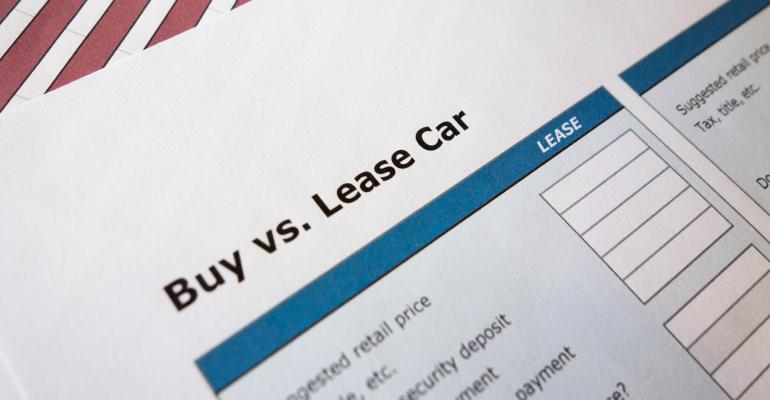Determining which battery-electric-vehicle purchases qualify for a $7,500 federal tax credit just got a lot simpler.
Any leased BEV now qualifies, says J.D. Power. That could produce a surge in BEV leasing and deepen the pool of BEV owners. The caveat is that the lessor – who could be either a finance company or the dealership itself -- receives the credit and must pass it on to the consumer
“It gives dealers one more leverage to sell BEVs,” Elizabeth Krear, vice president, electric vehicle practice at J.D. Power, tells Wards.
Eligibility for a $7,500 tax credit on a BEV purchase, part of the Inflation Reduction Act passed last year, included credit requirements based on consumer income and vehicle price. Those requirements became even stiffer when, on April 18, domestic content requirements for battery elements were added. Many models were no longer eligible – if they were purchased.
But on Jan. 1, all leased BEVs became eligible for the tax credit because they are technically classified as commercial vehicles. That makes leasing a BEV less expensive than buying one, says Krear.
The impact is starting to show in monthly lease numbers, she says. In December the percentage of leased BEVs was 10%, she says. By April it had risen to 41%.
“There is a learning curve for the dealers and the customers to even know to ask” if the incentive is available,” Krear says.
Bozard Ford-Lincoln in St. Augustine, FL, makes it a point to educate its customers about the tax credit for leasing an electric vehicle, says Rob Breinich, a single-point-of-contact salesperson at the dealership. And the ease of obtaining the credit through leasing has boosted EV leases for the dealership, he says.
“The adopters of the EVs really like the lease option, because they can get another vehicle in three years and they are able to get the full credit regardless of their income level,” says Breinich.
Ed Roberts, the dealership’s chief operating officer, expects the number of people acquiring an EV through leasing to rise.
“I do think the leases will increase because they get the tax credit, and if in a couple of years they decide an EV isn’t for them, they can turn it in,” he says.
Growing the BEV Consideration Pie
Interest in owning a BEV has stalled in recent months. The Kelley Blue Book Brand Watch found that in the first quarter of 2023, consideration for electrified vehicles remained constant since the fourth quarter of 2022. And while about 25% of those shopping for a new vehicle considered an electrified vehicle, of those only 9% considered a BEV. Eighteen percent considered a hybrid or plug-in hybrid.
J.D. Power finds a similar trend, says Krear. The company’s monthly survey of 2,000 new-vehicle shoppers and those likely to consider purchasing a BEV has hovered in the 25% range for the past year, she says.
That may change, however. For one, more BEV brands and body styles are coming on market, including more pickups and utility vehicles.
Also, BEVs are becoming more affordable on a Total Cost of Ownership basis, says Krear. “We are approaching parity with internal-combustion-engine (vehicles),” she says.
And while both leasing and buying a BEV are becoming more affordable compared to an ICE vehicle, leasing leads.
J.D. Power has seen the average monthly expenditure inclusive of all total-cost-of-ownership elements for a three-year lease for a BEV drop by $403 since December compared to the corresponding ICE segment, says Krear, while the drop for a five-year purchase has been only $118 compared to an ICE purchase.
This affordability trend, coupled with greater selection, “could absolutely open the door for people who couldn’t afford a BEV before,” says Krear.
If the predicted BEV leasing surge does occur, dealers need to keep a knock-on effect in mind, as well.
“If BEVs are going to be leasing more, that means in three years those customers are coming back to the dealership. There will be more used BEVs to sell,” says Krear.




